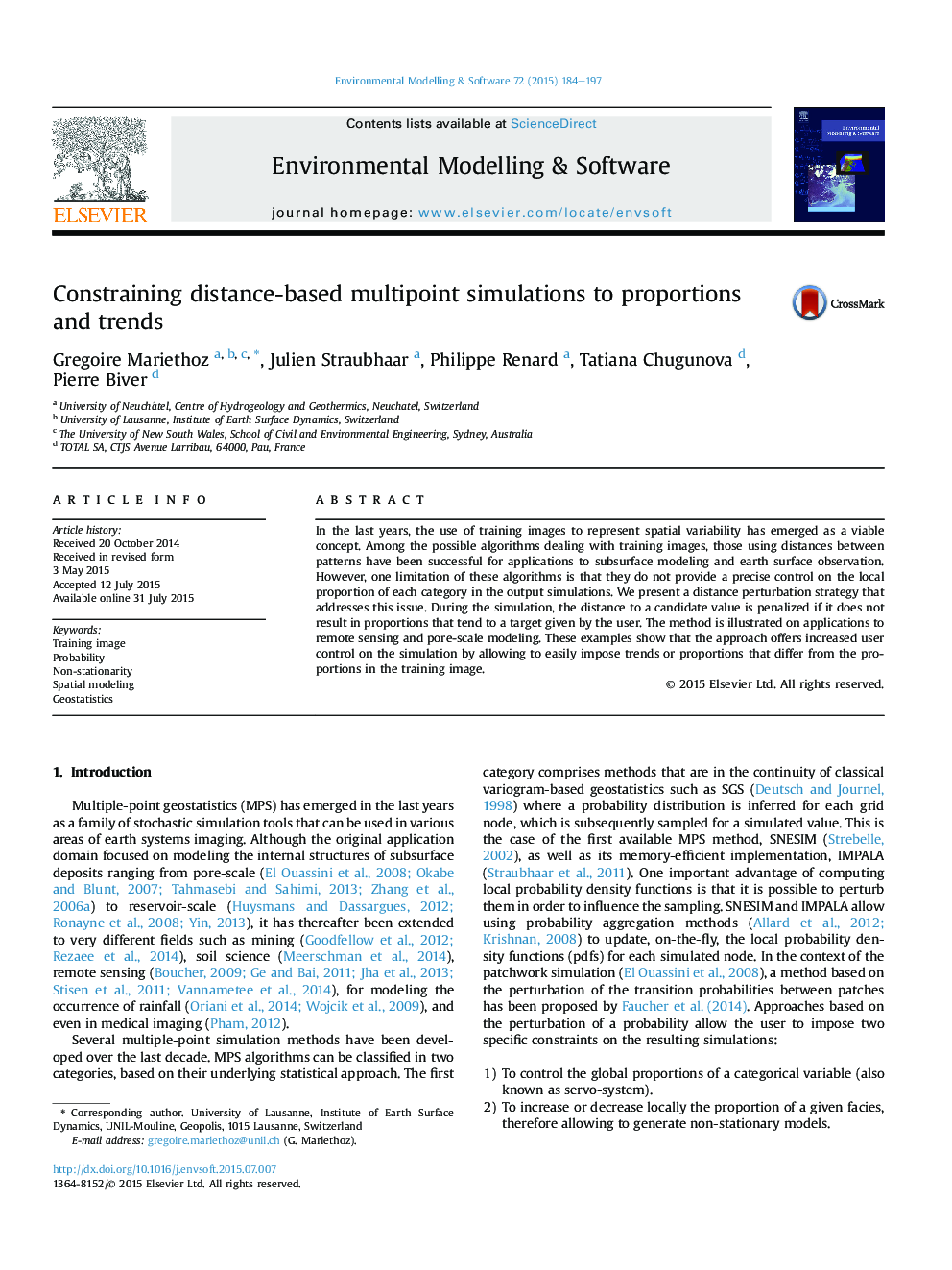| Article ID | Journal | Published Year | Pages | File Type |
|---|---|---|---|---|
| 6963071 | Environmental Modelling & Software | 2015 | 14 Pages |
Abstract
In the last years, the use of training images to represent spatial variability has emerged as a viable concept. Among the possible algorithms dealing with training images, those using distances between patterns have been successful for applications to subsurface modeling and earth surface observation. However, one limitation of these algorithms is that they do not provide a precise control on the local proportion of each category in the output simulations. We present a distance perturbation strategy that addresses this issue. During the simulation, the distance to a candidate value is penalized if it does not result in proportions that tend to a target given by the user. The method is illustrated on applications to remote sensing and pore-scale modeling. These examples show that the approach offers increased user control on the simulation by allowing to easily impose trends or proportions that differ from the proportions in the training image.
Related Topics
Physical Sciences and Engineering
Computer Science
Software
Authors
Gregoire Mariethoz, Julien Straubhaar, Philippe Renard, Tatiana Chugunova, Pierre Biver,
